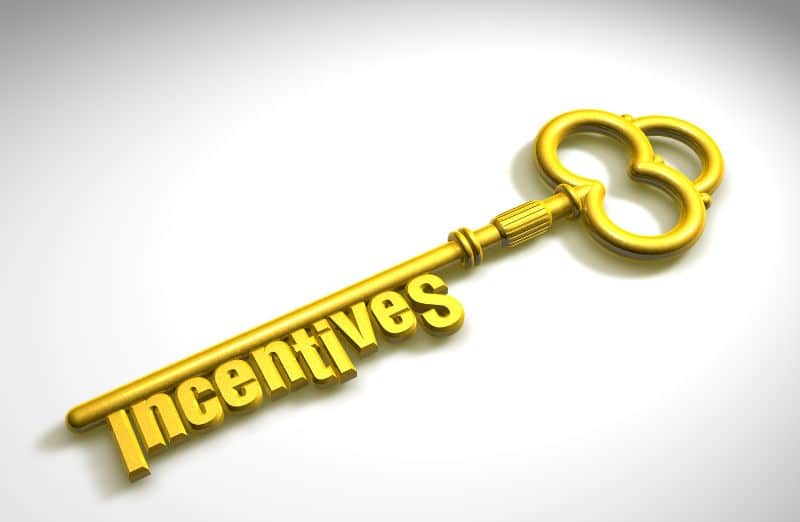Negative incentives often evoke images of fear, pressure, and dissatisfaction, but in the world of behavioral psychology and employee motivation, they have a surprisingly positive side. By carefully designing and applying negative incentives, businesses can foster healthy competition, inspire self-improvement, and achieve remarkable team results. While the term “negative incentive” might sound counterproductive, it’s more about creating accountability and urgency than punishment.
This article explores the psychology of negative incentives, their role in team dynamics, and how platforms like Spinify can harness their power to boost employee performance without sacrificing morale or well-being.
Key Concept

The question of whether positive or negative incentives work better has long been a matter of debate in society. Children were thought to responded better when they were spanked for bad behavior than if they were rewarded for good behavior. Evangelists preached fire and brimstone rather than eternal life to keep their flocks compliant to the word of god.
Delving deeper into this debate, it’s important to understand the psychological mechanisms behind both positive and negative incentives. Positive incentives, such as rewards and recognition, tend to foster a sense of accomplishment and encourage desired behaviors by offering a tangible or intangible gain. They are often used to reinforce good performance, boost morale, and promote a positive company culture. Positive incentives can be powerful motivators, especially when they align with employees’ personal goals and values, leading to enhanced employee engagement and job satisfaction.
On the other hand, negative incentives, which involve penalties or the threat of loss, aim to deter undesirable behaviors by highlighting the consequences of poor performance. While negative incentives can be effective in certain situations, they must be implemented carefully to avoid creating a hostile or fearful work environment. When used judiciously, negative incentives can prompt employees to improve their performance, adhere to company policies, and meet deadlines, thus contributing to overall productivity and revenue growth.
In practice, the effectiveness of positive or negative incentives largely depends on the context, the individual personalities of the employees, and the specific goals of the organization. A well-balanced incentive structure that incorporates both positive and negative stimuli can offer employees a comprehensive motivational framework, encouraging them to strive for excellence while avoiding complacency.
Ultimately, the key to successful incentive programs lies in understanding the unique dynamics of the sales team or workforce, and tailoring the approach to meet their specific needs and aspirations. By doing so, companies can effectively motivate their sales talent, drive performance, and achieve their desired business outcomes.
In the Workplace

The choices are less stark in the workplace, however there is still disagreement over the impact of positive and negative incentives to motivate the right work behaviors. Indeed just as our views on spanking children has changed, firms rarely use negative incentives. There is a strong belief system with managers that people will not respond to negative incentives. Research however, shows that negative incentives; incentives that require individuals to perform in order to avoid a loss, are more motivating than positive incentives, which motivate individuals through a gain. A good example is the case of outsourcing in the early 2000’s. Work productivity inside the organization increased during the market testing phase of an outsourcing opportunity. It fell off when the decision was made as people faced uncertainty and actual job losses.
In today’s dynamic work environment, businesses are constantly seeking innovative ways to keep their sales teams and employees engaged and motivated. The use of negative incentives, though less common, can be a valuable tool in driving performance when implemented strategically. For instance, setting clear expectations and consequences for not meeting sales goals can create a sense of urgency and accountability among sales reps. This approach can be particularly effective in high-pressure industries where meeting targets is crucial for revenue growth.

Moreover, negative incentives can be integrated into a broader incentive program that includes positive rewards. By balancing both approaches, companies can cater to different personality types and motivational triggers within their workforce. For example, while some employees may be driven by the fear of losing certain privileges, others might respond better to the promise of rewards such as gift cards, travel vouchers, or professional development opportunities.
It’s essential for managers to communicate the rationale behind negative incentives clearly and ensure that they are perceived as fair and consistent. This transparency helps in maintaining trust and morale within the team, preventing the negative incentives from becoming a source of resentment or demotivation. Additionally, regular feedback and support should accompany any incentive structure to help employees improve and meet their objectives.
Ultimately, the key is to create a productive work environment where both positive and negative stimuli are used judiciously to encourage desired behaviors and achieve organizational goals. By doing so, companies can effectively motivate their sales talent, enhance overall sales performance, and drive business success.
What Are Negative Incentives?
Negative incentives are consequences designed to discourage certain behaviors or outcomes. Unlike positive incentives, which reward success, negative incentives highlight what might be lost or missed if goals aren’t achieved. For example:
- Missing a bonus for failing to hit sales quotas.
- Losing priority on project assignments due to underperformance.
- Publicly ranking low on a leaderboard compared to peers.
Rather than punitive, well-structured negative incentives act as motivators. They tap into the human aversion to loss, known as “loss aversion,” which is a key principle in behavioral economics. People are often more driven to avoid losses than to achieve equivalent gains.
The Psychology Behind Negative Incentives

Humans are wired to react strongly to potential losses. Behavioral scientists Daniel Kahneman and Amos Tversky introduced the concept of loss aversion through their prospect theory, which explains why people prefer avoiding losses to acquiring gains. This natural tendency creates a fertile ground for using negative incentives to spur action.
When applied in workplace settings, loss aversion can push employees to stay on track with their goals. For instance, knowing that underperformance could result in lower recognition compared to peers drives professionals to stay motivated and accountable.
Key Psychological Benefits of Negative Incentives:
- Focus and Accountability: Employees become more mindful of deadlines and targets.
- Increased Effort: Negative consequences can drive higher levels of productivity.
- Healthy Competition: When balanced with transparency, negative incentives encourage individuals to strive for improvement in a supportive environment.
Positive Results of Negative Incentives in Real-World Applications

Organizations worldwide, from startups to Fortune 500 companies, are leveraging the concept of negative incentives to maximize productivity and engagement. For example:
- Tesla implements a performance-based culture where failing to meet expectations can result in fewer opportunities for advancement. This high-pressure environment has pushed teams to innovate and produce groundbreaking results.
- Amazon employs strict performance management systems that include negative incentives, such as potential removal from programs, to ensure employees remain efficient and deliver consistent results.
However, these approaches must be handled with care to avoid burnout or resentment. Enter tools like Spinify that blend accountability with fun, motivation, and gamification.
How Spinify Turns Negative Incentives into Positive Outcomes

Spinify is a leading gamification platform that revolutionizes how teams approach motivation and performance. With Spinify, businesses can implement structured negative incentives in a way that inspires, rather than discourages, employees.
Key Features of Spinify That Support Balanced Negative Incentives:
- Customizable Leaderboards:
Spinify allows businesses to create leaderboards that publicly display employee rankings. While seeing their position drop on the board may act as a negative incentive, it also sparks a desire to climb higher and achieve recognition. - Gamified Performance Metrics:
By transforming KPIs into engaging games, Spinify softens the impact of negative incentives. For example, employees may avoid finishing last in a challenge because they want to experience the satisfaction of winning badges and points. - Real-Time Feedback:
Spinify provides instant updates, allowing employees to see how their actions influence outcomes. This immediate feedback loop keeps motivation high and ensures individuals stay on track. - Celebratory Highlights:
By celebrating wins while subtly addressing underperformance, Spinify creates a balanced ecosystem. Employees who face negative incentives are encouraged to work harder, while top performers are publicly acknowledged and rewarded.
Designing Effective Negative Incentives with Spinify
Negative incentives should be carefully planned to prevent backlash and disengagement. With Spinify’s customizable solutions, businesses can implement incentives that foster positive outcomes. Here’s how:
1. Keep It Transparent
Clear communication about performance expectations is essential. Spinify’s dashboard allows managers to define objectives, making it easy for employees to understand how their performance is being evaluated.
2. Balance Negative and Positive Reinforcement
Use Spinify to pair negative incentives (such as ranking low on a leaderboard) with opportunities for reward. For example, employees who improve their ranking significantly can receive public recognition or earn additional points.
3. Focus on Team Spirit
Negative incentives don’t have to pit employees against each other. Spinify enables team-based competitions, where group accountability and collaboration take precedence over individual rivalry.
The Right Way to Use Negative Incentives in the Workplace
When used strategically, negative incentives can inspire employees without creating a toxic environment. Here are a few best practices:
- Avoid Over-Penalizing: Excessive focus on negative consequences can lead to fear and resentment. Balance is key.
- Encourage Self-Reflection: Use Spinify’s real-time analytics to help employees identify areas for improvement.
- Celebrate Progress: Recognizing growth, even small wins, counters the potential stress of negative incentives.
- Foster Continuous Learning: Combine negative incentives with opportunities for skill-building and professional development.
Why Gamification Makes Negative Incentives Effective
Gamification adds a layer of fun and engagement to negative incentives. By incorporating game mechanics like points, levels, and leaderboards, employees experience less anxiety and more motivation to improve. Spinify’s gamification platform excels at creating this balance by:
- Turning competition into a fun challenge.
- Offering rewards and recognition alongside consequences.
- Ensuring a fair and transparent process.
The Positive, of a Negative Approach

The first thing that needs to happen is for managers to reset their thinking, their unconscious biases that negative incentives won’t motivate their team members. Managers could begin designing some incentive programs that might seem counter intuitive, however they could lead to higher performance.
We already accept that there is no one-size-fits-all motivation programs and that many varieties of motivation should be utilized. This might be cash and non cash rewards. We also know that different demographics are motivated by different incentives.
To further elaborate, the concept of negative incentives is not about creating a punitive environment but rather about setting clear expectations and consequences. When used effectively, negative incentives can serve as a powerful motivator by instilling a sense of urgency and responsibility. For instance, sales teams can be driven to meet their targets by understanding that failing to do so could result in the loss of certain privileges or bonuses. This approach can be particularly beneficial in competitive industries where the pressure to perform is high.
Moreover, integrating negative incentives into a broader incentive program can help cater to diverse motivational needs within a team. While some employees thrive on positive reinforcement, others may respond better to the challenge of avoiding negative outcomes. By offering a mix of both positive and negative stimuli, managers can create a balanced incentive structure that encourages desired behaviors and drives overall performance.
It’s also important for managers to communicate the purpose and benefits of negative incentives clearly to their team. Transparency in how these incentives are applied can help in maintaining trust and morale, ensuring that they are perceived as fair and constructive rather than punitive. Regular feedback and support should accompany any negative incentive strategy to help employees understand how they can improve and meet their objectives.
Ultimately, the goal is to foster a productive work environment where both positive and negative incentives work in harmony to motivate the entire team, enhance employee engagement, and achieve business success.
A Workplace Example

While many managers shy away from removing cash from a person or removing their entitlements, some firms are applying negative incentives. Law firms allocate bonuses as part of annual salaries, for example. Bonuses are lost if they do not meet a certain number of billable hours. These days we are also seeing some companies stipulate that health care coverage will be reduced if employees do not take certain health improvement steps.
In addition to these examples, negative incentives can be leveraged in various other ways. For instance, in the sales industry, sales reps might face the possibility of losing exclusive territories or high-value client accounts if they fail to meet their sales targets consistently. This approach not only motivates them to maintain a high level of performance but also ensures that the most capable sales reps are handling critical accounts, ultimately boosting the company’s revenue growth.
Innovative Applications of Negative Incentives
Another innovative application of negative incentives is in the form of performance-based demotions. While promotions are a common positive incentive, the threat of demotion can serve as a strong motivator for employees to maintain their performance levels. This can be particularly effective in roles where leadership and responsibility are key, as it encourages employees to continuously develop their skills and contribute to the team’s success.
Furthermore, negative incentives can also be integrated into training and development programs. Employees who do not complete mandatory training sessions or fail to acquire necessary certifications within a given timeframe may face restrictions in their career advancement or access to certain projects. This not only emphasizes the importance of professional development but also aligns individual growth with the organization’s objectives.
A positive spin on a negative example might be showing employee non-performance in specific areas on a leaderboard. Let’s say a company is having difficulty getting adoption of accurate data updates on client activities. They might run a leaderboard where the person with the most incomplete data fields is at the top and the person with the least is at the bottom. This way, as the employee completes these tasks not yet done, there is a countdown to zero. The aim being for all employees to have a clean space on the leaderboard. The hero is the person with zero incomplete tasks.
Overall, while negative incentives must be used with caution to avoid creating a hostile work environment, they can be a valuable tool when strategically integrated with positive incentives. By clearly communicating expectations and consequences, managers can effectively motivate their teams, encourage desired behaviors, and drive overall performance.
Harnessing the Power of Negative Incentives: A Balanced Approach to Motivation
Despite our natural bias against negative incentives, managers should consider all incentive options. This way they keep things fresh with their team, encourage good behaviors with a carrot and a stick. Spinify can help you with positive and negative leaderboards to engage and motivate your staff to focus on the metrics that matter.
For more news and updates, follow us on our social media profiles: LinkedIn and Twitter




